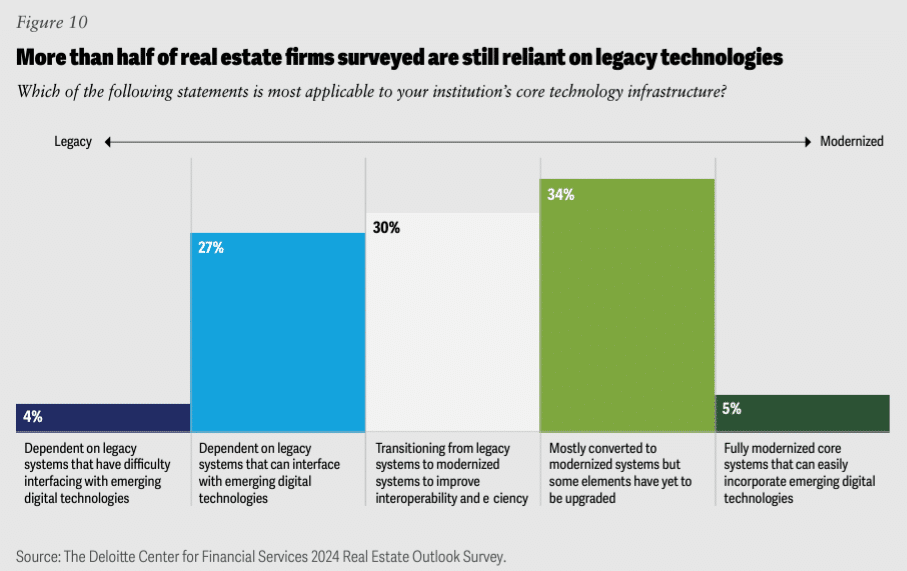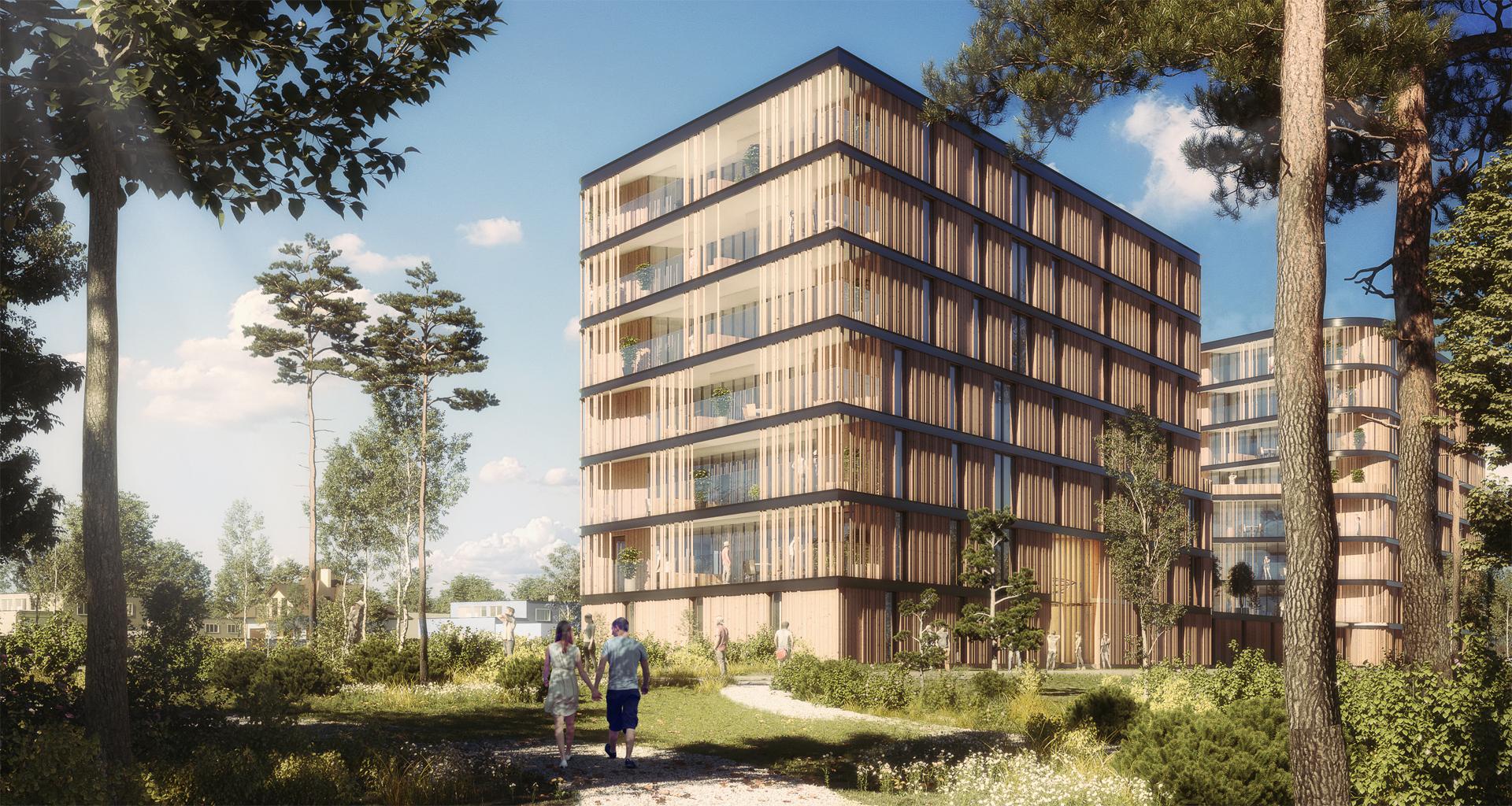Why Virtual Reality and 3D Rendering are the Future of Real Estate
3D interior rendering created by Render Art Studio for Transpole Competition for 908 Avenue de la République, Marcq-en-Baroeul, France, for a project presentation
The real estate industry is undergoing a technological transformation, and tools like virtual reality (VR) and 3D rendering are at the forefront of this change.
As Render Art Studio, an expert 3D architectural rendering company, demonstrates, these innovations are fundamentally changing how properties are designed, developed, marketed, sold, and maintained.
Let’s explore how these innovations reshape every facet of real estate and why they’re the industry’s future.
The Real Estate Industry’s Adoption of Technological Advancements
The real estate industry is often criticized for its relatively slow adoption of technological advancements.
According to Deloitte’s 2024 commercial real estate outlook:
- 61% of global real estate owners and investors are still reliant on legacy technology infrastructures
- up to 73% of enterprise data across industries, including real estate, remains unused

Despite a relatively slow start, the real estate industry is beginning to embrace Property Technology (Proptech).
The term broadly refers to the integration of advanced technologies into different real estate processes and practices, covering innovations ranging from smart home developments to online property viewing systems.
According to a report by Grand View Research, the global Proptech market was valued at USD 25,145.1 million in 2021 and is projected to grow at a compound annual growth rate (CAGR) of 15.8% from 2022 to 2030.
Ways Virtual Reality and 3D Rendering are Changing Real Estate and Shaping Its Future

Architectural tender Langeweg Hoek presented on renderings made by Render Art Studio
Among the Proptech solutions gaining traction, virtual reality and 3D rendering are two of the most widely adopted technologies by real estate companies.
Virtual reality (VR) is a technology that creates a simulated environment, allowing users to immerse themselves in a three-dimensional, computer-generated space. Wearing a VR headset, users can interact with this environment in a way that mimics real-life experiences.
3D rendering is the process of creating two-dimensional images or animations from a three-dimensional model. The technology is used to generate realistic and narrative visualizations of objects, buildings, and spaces.
Let’s look at how these two technologies are changing the industry and shaping its future.
1. Transforming the Design and Planning Phase
Modern real estate development begins long before breaking ground. Virtual reality and 3D rendering technologies enable architects, developers, and stakeholders to collaborate more effectively during the crucial planning stages.
These tools allow for detailed visualization of concepts, helping teams identify potential issues and optimize designs before construction begins.
2. Driving Marketing and Sales
Virtual reality and 3D rendering are also helping drive marketing and sales in real estate, even for properties that are yet to be built. These technologies provide immersive and interactive experiences that capture potential buyers’ attention and keep them engaged.
Here’s how:
- Interactive property tours: Virtual tours allow buyers to explore properties remotely, saving time and expanding their reach to global markets. This increases the pool of potential buyers.
- Enhanced visual appeal: High-quality 3D renderings make listings more attractive, highlighting the property’s best features and helping it stand out in a crowded market.
- Customized presentations: Agents can use these tools to create tailored presentations that meet the specific needs and preferences of different clients, enhancing the buying experience.
- Faster decision-making: Immersive and detailed visualizations help buyers make informed decisions more quickly, shortening the sales cycle and increasing the likelihood of closing deals.
3. The Investment and Analysis Perspective
For investors and analysts, virtual reality and 3D rendering technologies offer groundbreaking tools for property evaluation and portfolio management.
These technologies provide a level of detail and immersion that traditional methods simply cannot match. With their help, investors can explore properties in-depth, examining architectural details, layouts, and finishes as if they were physically present.
Such a level of scrutiny is invaluable for assessing the possible risks, true value, and potential of an investment, ensuring that decisions are based on comprehensive and accurate information.
Additionally, investors can use virtual reality and 3D rendering to create detailed visual representations of their entire property portfolio. This holistic view makes it easier to manage multiple investments, track performance, and identify opportunities for optimization.
It also facilitates better communication with stakeholders, as visual data is often more accessible and persuasive than traditional reports.
4. Improving Construction and Development
The impact of these technologies extends directly to the construction process. Construction teams can now:
- visualize complex structural elements in detail
- coordinate with contractors more effectively
- track progress against 3D models
- identify potential conflicts before they become costly issues
- make real-time adjustments to design elements
5. Enhancing Property Management and Maintenance
Property management has also changed significantly with the integration of VR and 3D technology. Using these technologies allows building managers to:
- access detailed 3D models of building systems
- plan maintenance more effectively
- train staff using virtual environments
- manage renovations with greater precision
- monitor building performance
Future Outlook

3D visualizations made for an architectural competition presenting a future university in Amsterdam, created by Render Art Studio
The shift toward virtual reality and 3D rendering in real estate is unstoppable, driven by evolving consumer expectations and rapid technological advancements. Buyers today demand greater transparency and convenience, while developers and agents seek to stand out in an increasingly competitive market.
Looking ahead, we can anticipate significant developments in the following areas:
- Artificial intelligence integration: AI will further enhance the capabilities of VR and 3D rendering, making these tools smarter and more intuitive.
- Augmented reality applications: AR will complement VR, providing new ways to interact with and visualize real estate properties.
- Blockchain integration for property records: Blockchain technology will offer more secure and transparent methods for managing property records.
- Advanced simulation capabilities: Enhanced simulations will allow for more detailed and accurate representations of properties.
- Enhanced collaboration tools: Improved collaboration tools will facilitate better communication and coordination among real estate professionals.
With these innovations in the cards, there’s no doubt that we can see a significant transformation in how real estate is experienced in the future — more interactive, efficient, and buyer-focused.
Conclusion
Virtual reality and 3D rendering are transforming every aspect of the real estate industry, from initial concept to ongoing management. These technologies are not just enhancing existing processes but creating entirely new possibilities for development, management, investment, marketing, and interaction with real estate assets.
Frequently Asked Questions
1. What types of properties can benefit from virtual reality and 3D rendering?
Virtual reality and 3D rendering are versatile and can be used for residential homes, commercial buildings, new developments, and renovation projects.
2. How is VR being used in real estate construction safety training?
VR provides immersive safety training environments where construction workers can practice dangerous scenarios without risk.
3. Can smaller real estate firms benefit from these technologies?
Even smaller firms can use VR and 3D rendering to stand out in the market, offering enhanced customer experiences without the overhead of traditional methods.







